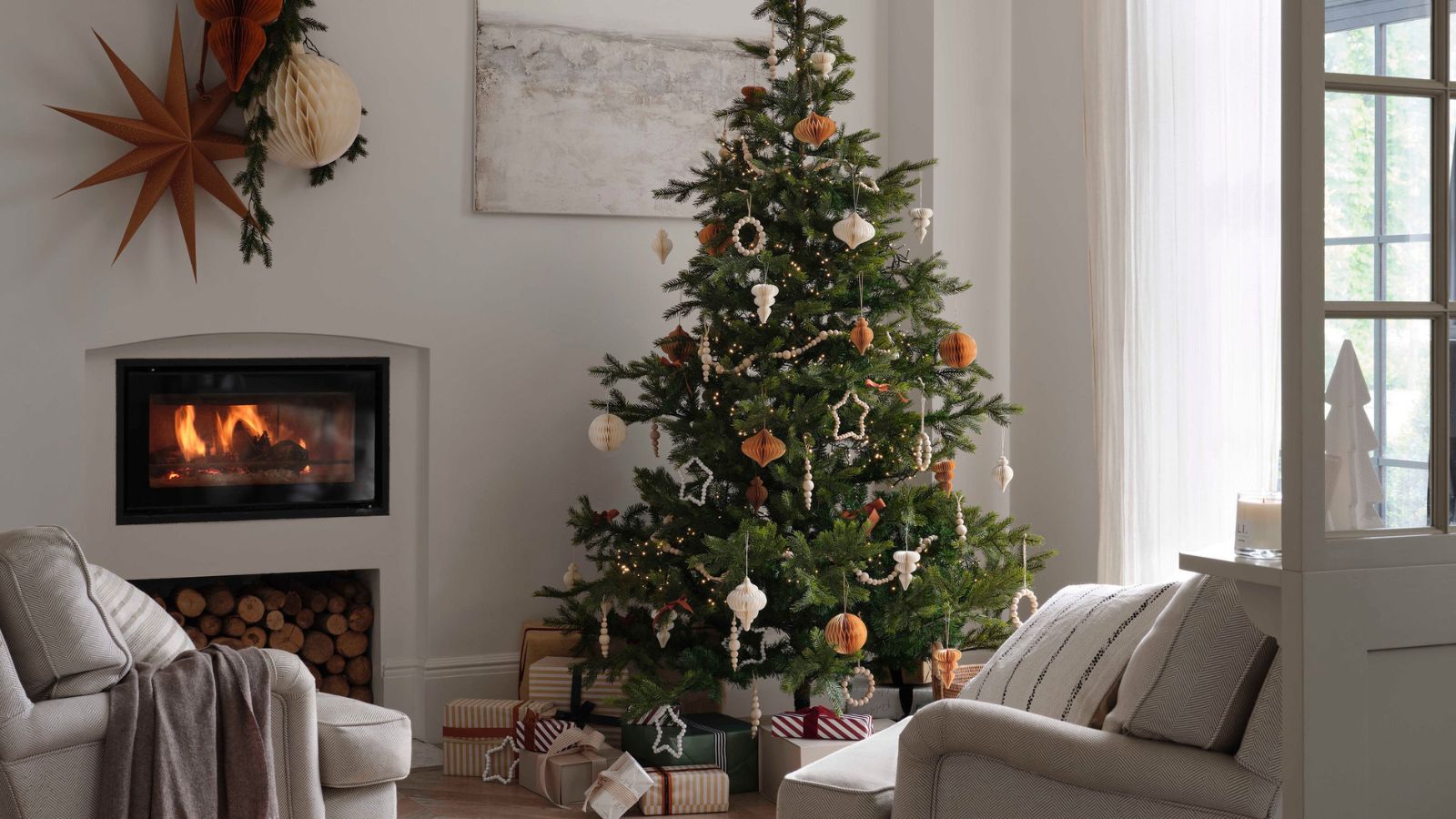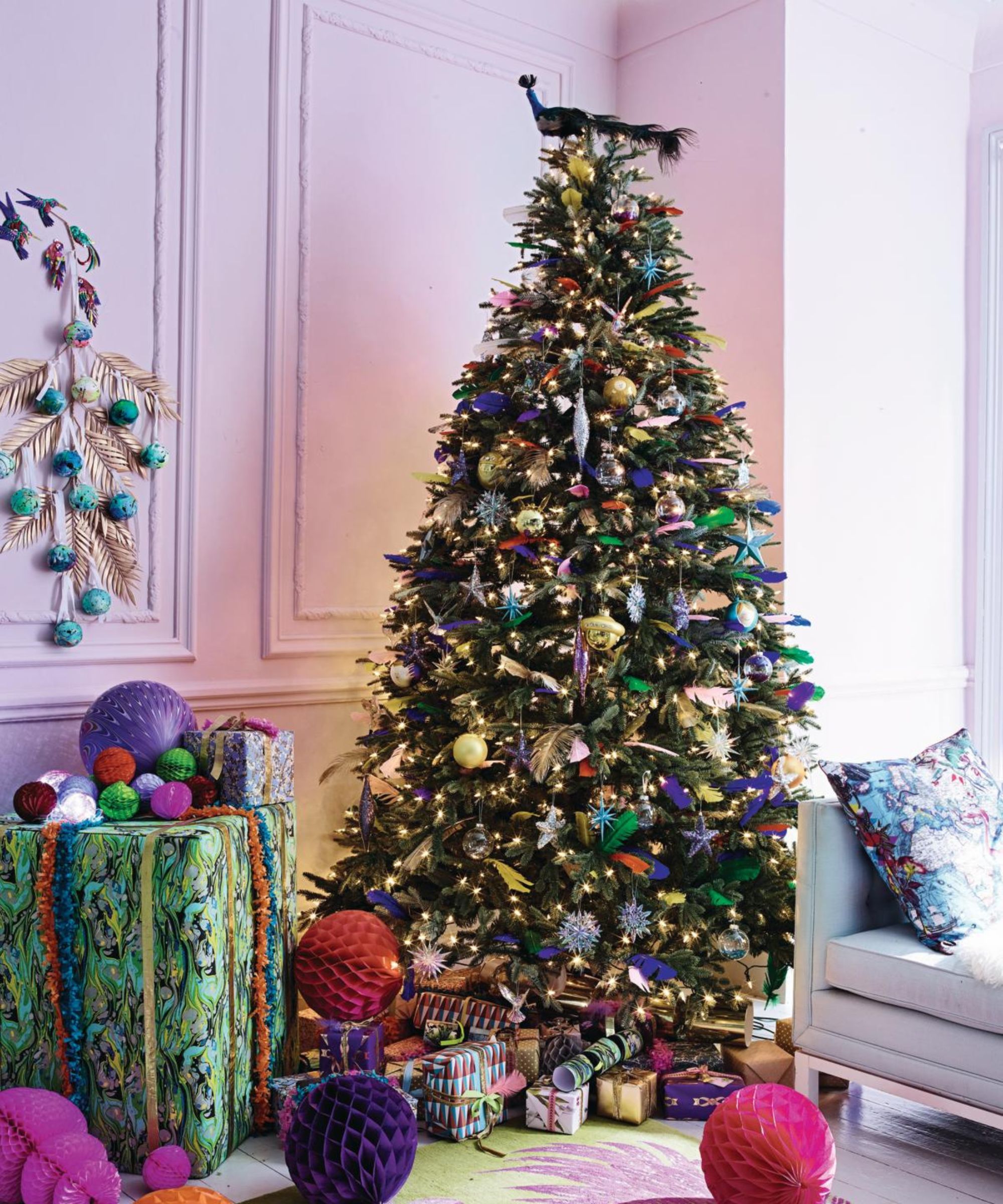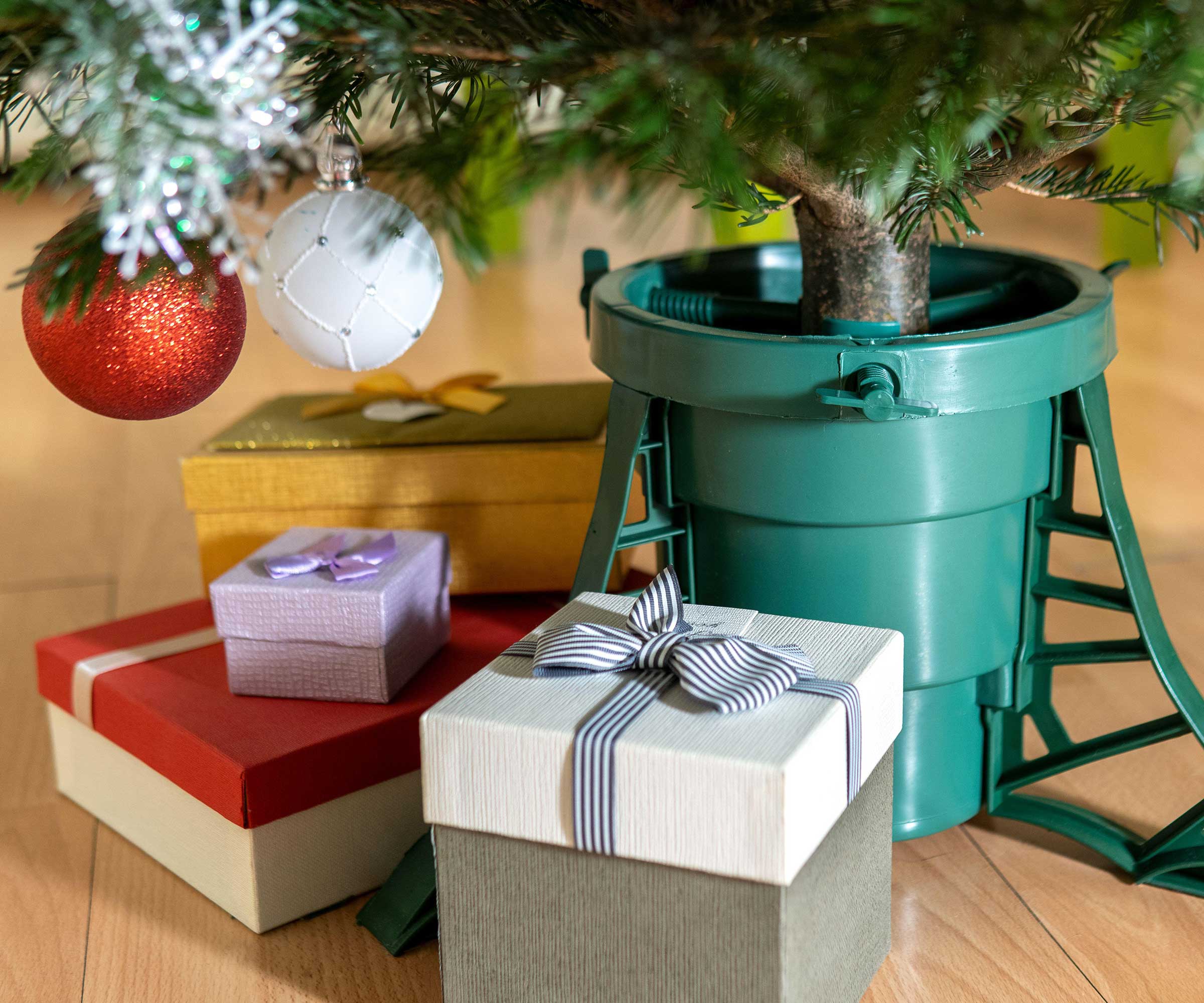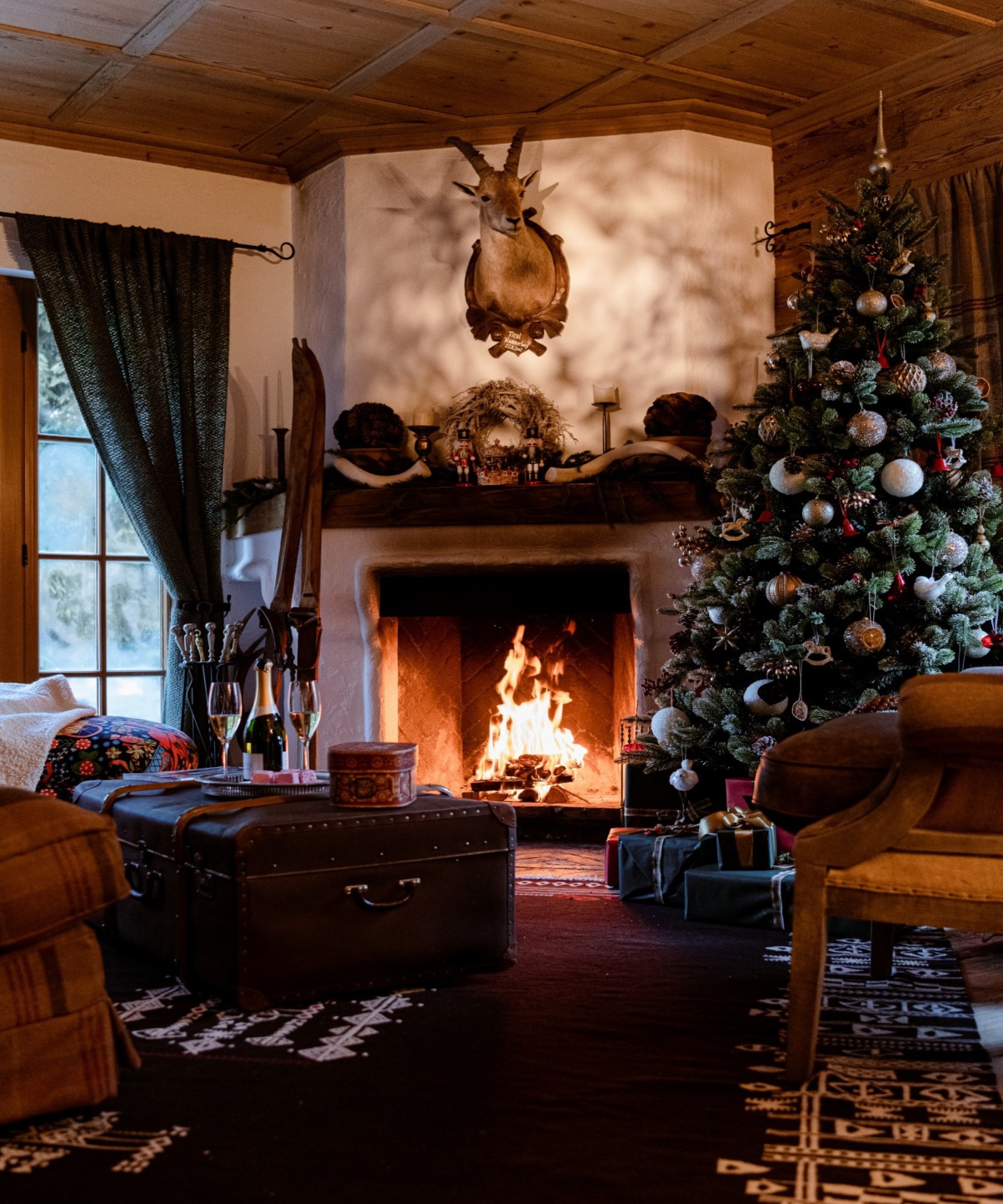
Q: My Christmas tree is turning brown and definitely not looking like it's going to last through the holidays. It isn't dropping pine needles, but they are dry to the touch and don't look fresh. What is causing this, and is there anything I can do to revive my Christmas tree?
A: There are a number of reasons why your Christmas tree could be turning brown, but do not fret. If you take the time to learn some tips about how to care for your Christmas tree, going forward you will be far more likely to have success in keeping a Christmas tree alive.
We have identified four common reasons why the needles of your Christmas tree might be turning prematurely brown. And, we talked to Christmas tree experts to learn what to do to if you spot them.
1. Failing to cut the base of your Christmas tree

Much like we cut the ends of flower stems to encourage water uptake and keep our blooms looking fresh, the same should be done for a Christmas tree as soon as you get it home.
'It's very important to give your tree a fresh cut from the base within an hour of putting the tree in water,' says Michael Lyons, owner of Christmas Trees in the Mail. 'A freshly cut tree contains a lot of sap, which can create a seal on the base of the tree, preventing it from drinking.'
Karen Musgrave Hicks, marketing associate for Hicks Nurseries, adds, 'The seal on a freshly cut tree forms over their stump 4 to 6 hours after being cut. In order for the tree to absorb water, make a fresh cut to the stump and place the tree in a bucket of water until you transport it into its stand.'
You can use a cordless chainsaw, such as the Hart cordless chainsaw from Walmart to ensure clean, even cuts on the base of your tree. It's recommended to cut around one-inch off of the tree's base to ensure that the sap seal is removed, allowing water to hydrate the plant once more.
Gently lay the Christmas tree down to do this, being mindful of its weight and potentially crushing its branches. It's easier to do this job outside before bringing the tree into your home.
'If your tree stops drinking water after a few days, or doesn't drink any at all, I recommend cutting a few more inches from the base of the tree,' says Michael.
2. Not adding water to the Christmas tree stand

It isn't enough to water a Christmas tree with a light sprinkling when you get it home. Your tree needs to have water constantly in its stand. This is a necessary part of making sure your tree won't dehydrate - but it is also important not to go overboard and put too much water in. Doing this will cause your tree to begin to rot, resulting in browning needles and possibly even a bad-smelling Christmas tree.
'It’s important to maintain water in the stand of your Christmas tree,' says Michael. 'If your tree drinks all the water and the stand is left empty this could prevent your tree from drinking adequate water in the future.' This results in dehydration and browning, as the tree begins to die.
If you have a potted Christmas tree, investing in a moisture meter, such as the Mcbazel soil and moisture meter from Amazon is an effective way to monitor the water levels in your tree's soil. It will also give you further information, including temperature, soil PH and light level.
Insert the moisture meter three or four inches into the soil in your tree stand, then switch it onto the 'moisture detecting' mode. The display screen will then tell you whether the soil is dry, moderate or moist. It's good to keep your Christmas tree's soil moderately moist at all times to make sure it doesn't start to stoop or wilt.
3. Your tree is getting too much direct sunlight
Placing your beautifully decorated Christmas tree by the living room window to be adored by all who pass by is a wonderful idea. However, it's important to remain mindful about the degree of sunlight that's directly hitting your Christmas tree.
'If you notice your tree turning brown after only a few weeks, the tree is most likely dehydrated or being impacted by the sun,' says Michael Lyons. 'Make sure your tree is not receiving too much direct sunlight.'
'The heat accelerates the evaporation of water from both tree and stand,' Lyon further explains. This leads to your Christmas tree drying out and, in turn, going brown.
If you are trying to make a Christmas tree fit in a small space, and a bright window is your only option, consider investing in some self-adhesive window film, such as the Rabbitgoo heat reflective window film from Amazon. This film reflects light way from the glass of your window and away from your tree. You can get the film in tinted or transparent varieties, so your view outside won't be affected.
4. Your tree is near a radiator or fireplace

If your Christmas tree is near to a heat source, such as a radiator or fireplace, this is likely one of the main reasons why your Christmas tree is turning brown.
'Too much warmth will dry the needles out, causing them to turn brown and eventually drop,' says Karen. 'You can prevent this issue by placing your tree in a cool spot away from heat.'
If you're working with a small space and have no choice but to stand your Christmas tree near a heater, we recommend keeping it off and perhaps investing in a smaller portable heater that you can move away from your tree instead. I use a heater similar to the Optimus portable oil-filled radiator from Target in my home. It works wonders to keep my space warm, and it's incredibly durable.
FAQs
Can I reverse the browning of my Christmas tree?
Michael Lyons, owner of Christmas Trees in the Mail, says 'You can’t reverse it. However, if you start to see some brown, move your tree away from direct sunlight or heat, and try giving the Christmas tree's base an additional cut if it appears consistently dehydrated.'
Although you can't reverse needles going brown, you can up your decoration game and disguise those areas which might have discolored early. This popular Christmas tree lighting technique is game-changing, bringing the biggest dose of festivity into your space and covering all kinds of tree ills.







